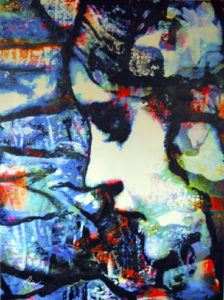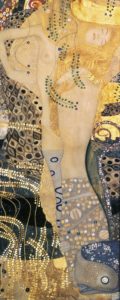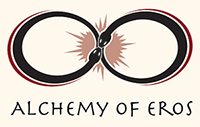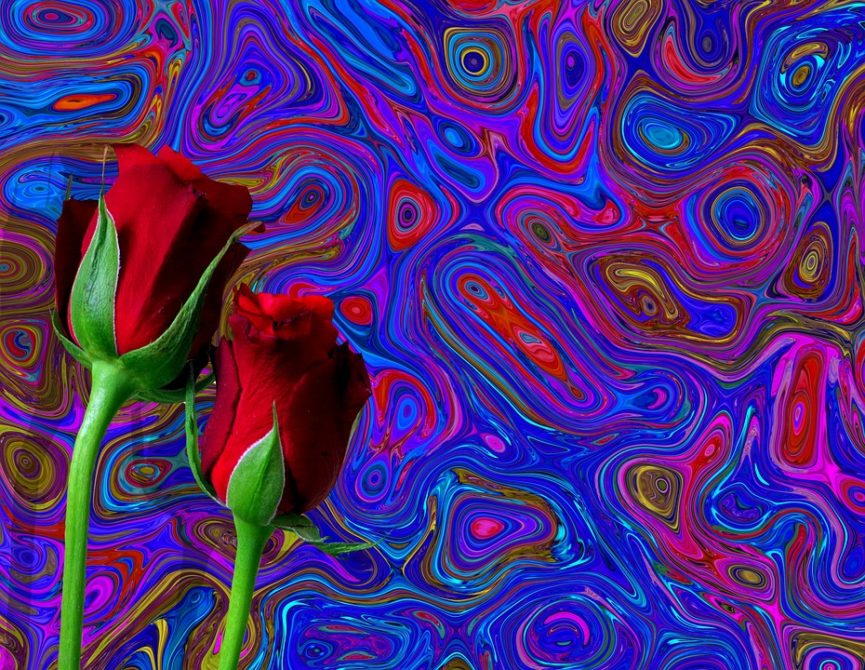THE LADY WITH THE BROKEN BACK
When you’re dealing with chronic pain, it can sometimes feel like the pain has become your identity. A little girl in South Africa expressed this beautifully when she stopped calling me by my name but instead called me “the lady with the broken back.”
I was living in Cape Town at the time, regularly flying to Johannesburg for various corporate facilitation gigs. I had been struggling with severe back pain for many years, but would not allow it to hold me back from my work commitments. Even if getting into a taxi made me cry. Even if the only way I could get to my room was by sliding along the hotel walls. Even if I had to call a doctor to come inject me with painkillers just to cope.
That was my known and familiar way of being, what we call in Process Work our Primary Identity: I was someone who persevered and never gave up, no matter what. At the same time, this meant that I was also someone who marginalized my pain. Someone who refused to listen to my body or bow to its limitations. Someone who had learned early on not to need other people.
PRAYER
However strong my will was, it couldn’t overcome the pain I was living with. One night in 2008, I finally gave in. I was laying down in my hotel room during a corporate seminar. My knees were resting on a stack of pillows and painkillers were strewn all over the mattress. I hadn’t prayed since childhood, but that night, I found myself praying.

“Please God, whoever or whatever you are,” I whispered into the empty room, “I can no longer live on my will power alone. Please take over.”
The next morning, as I tried to get up from the breakfast table, willing my feet to lift from the ground to take a step, I discovered I was no longer able to walk. Here it was, the emergence of what we call a Secondary Process: a new and, in my case, very unknown way of being. I was being forced to need and accept help from others.
One of my friends grabbed me, put my arms around her shoulders and dragged me into a taxi to see a doctor. During the drive I kept wiggling my toes, repeating: “I can wiggle my toes, I am not paralyzed. I can wiggle my toes, I am not paralyzed.”
The doctor told me my injury was serious and I needed to take total bed rest. My Primary Identity kicked in immediately.
“I can’t do that,” I told the doctor, “I am flying to America in two days time for my studies.” The doctor looked me straight in the eye. “If you get on an overseas flight in this condition, they will carry you out on a stretcher and you will never walk again.”
WAKING UP
In one of my early childhood dreams I am riding my bike when suddenly a wall appears in front of me. I wake up right as I crash into the wall. In Process Work, we believe that our early childhood dreams carry themes that run like a river through our lives, recurring again and again in different forms. I had run into the wall of my childhood dream. And just like in my dream, I woke up. I realized my prayers had been answered: My personal will needed to be defeated so I would stop pushing myself and surrender to something greater than me. Now that bigger will had taken over and was forcing me to listen to it.

Back in Cape Town there was another challenge for my Primary Identity. I could not live independently. I had to accept help. Another dear friend took me into his house and looked after me for months as I lay flat on a bed with my knees on a stack of pillows. Because my spine had to be completely straight, I couldn’t read or work on my computer. During those months when all I could do was lay flat on my back, I reconnected to the mysterious, transcendent joy I’d glimpsed during the spiritual quests of my twenties. In spite of the incredible physical pain, I felt like I was making love to the divine and that the divine was making love to me.
People who came to visit commented on how they’d never seen me so radiant, even though I was still shuffling through the house, my right foot barely able to lift off the ground, my left leg dragging behind me. As I opened up to receiving love from other human beings, my heart softened. I am convinced that it was this process that prepared me for the deep, open-hearted relationship I now enjoy with my partner Robert. Which brings me to the topic of sexuality.
SEX FROM THE INSIDE OUT
When I follow my Primary Identity and try to push through my feelings, my back transforms into the wall of my childhood dreams: the pain becomes debilitating to the point where I cannot have sex. My back injury forces me to listen to my sensitivity, to slow down and come from the inside out. I have to ask for what I need, for how and where I need to be touched. I have to communicate my limitations and boundaries, and express my desires for tender connection. I have to deeply and intimately relate to myself and from that place, connect with Robert and our sexual explorations. All of which is VERY secondary for me! Only when I surrender to my body’s signals am I able to relax into an organic state of arousal.
From that state of relaxation and acceptance, I am able to explore some of the deeper dynamics of my back injury and integrate them into my sexual experiences. Here’s where things get exciting.
Our sexuality can be a place where we can tap into and play with the deeper parts of our psyche that are already calling us.
Even if a symptom is ‘objectively true’, in what Process Work calls ‘Consensus Reality’, there is also a deeper process in the background. By unfolding the deeper meaning of a ‘physical disturber’, we may be able to bring its message and energies into our sexuality and enrich our experience. In my case, I was literally and symbolically thrown flat onto my back by a power greater than me. I was forced to surrender. That was a deep and marginalized part of my psyche calling out to me. And that is how, paradoxically, my back injury gave me a home inside myself.
My will power still serves me great in many areas of my life but sexually, being the one ‘on top’ or ‘in control’ is a total turn off. Sexually, what turns me on is to be in a position of serving, of devotion and surrender. This mirrors the overall process of my back injury, which was about ‘being conquered by a greater power’ that forced me to ‘fall backwards’ and to surrender to it.
By consciously playing with the energy of being Robert’s ‘servant’ and purposefully handing him the power to ‘control the show’ (for the duration of our sexual play), I am emulating the deeper process of my back injury. By giving my will over to a greater power my body can tap into an ene rgy that isn’t affected by pain. The ‘lady with the broken back’ recedes into the background I become ‘snake woman’.
rgy that isn’t affected by pain. The ‘lady with the broken back’ recedes into the background I become ‘snake woman’.
My body becomes like liquid and moves fluidly without any impediments. Surrendering to my back injury and embodying its message allows me and us to experience profound levels of intimacy and even transcendence. Me and Robert can move into a flow of movement, sound, love, joy, playfulness and connection where our expressions of power and surrender flow together in a dance of ecstatic oneness.
In Process Work, we call this the ‘Essence Level’: where there is no duality, nothing for or against, no separate parts.
SEX AND LIFE AS AN INTEGRATED DANCE
Sometimes we imagine that our sexuality is separate from the rest of our lives. I have found that my sexual experiences mirror the process unfolding in my life overall.
Sex can be the playground where we experiment with less familiar parts and energies in a safe and consensually agreed upon way. Life is where we then get to express and integrate the parts of us we play with sexually. By aligning the two, sex and life can become an integrated dance, each infusing the other.
For me, our sexual play has translated into relating not only with Robert but also with the people that come into my life, from a much deeper, gentler and more playful place. For Robert, it’s about connecting to his power and standing for his truth unapologetically.
To me this is the Alchemy of Eros, when everything becomes interwoven and you can’t tell whether you are expanding your sexuality or whether your sexuality is expanding you.
EROS IS EVERYWHERE
Depending on the type of symptoms you’re experiencing, you may be able to unfold the deeper meaning of a ‘physical disturber’ and use those energies to enrich your experiences of intimacy, sex and transcendence. Although this piece is specifically about integrating a physical symptom in a sexual context, the same principles and patterns can also be applied to all the non-sexual ways of making love and living an erotic, passionate life.
Sex is only one expression of our erotic life force. For some people who identify as asexual, or whose pain or injury is too debilitating or who have been single for a long time, their lovers may come in the form of trees and rivers and oceans. For others, art or creativity may be their lover. For some, the pursuit of knowledge and exploring the mysteries of the universe is what gets their juices going. Eros is everywhere. As one of my former spiritual teachers used to say: “The entire universe is one big fuck.”
TOUCHING THE SKY

In a way, the little girl in South Africa was right. I was the “lady with the broken back”: Life broke me because something in me needed to break.
Living on will power alone was a hubris that needed to be humbled in me. It was through that ‘broken-openness’ that I could surrender to a deeper wisdom and love.
As the poet Rumi puts it: “only from the heart can you touch the sky”.
Photo Attributions:
Prayer in Blue: By Mark Lewis Art [CC BY-SA 3.0 (https://creativecommons.org/licenses/by-sa/3.0)], from Wikimedia Commons
Water Serpents I: By Gustav Klimt [Public domain or Public domain], via Wikimedia Commons
The Birthday: By Marc Chagall [Public domain], via Wikimedia Commons

